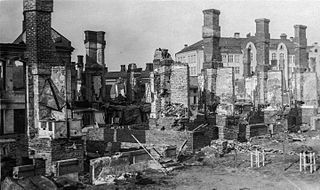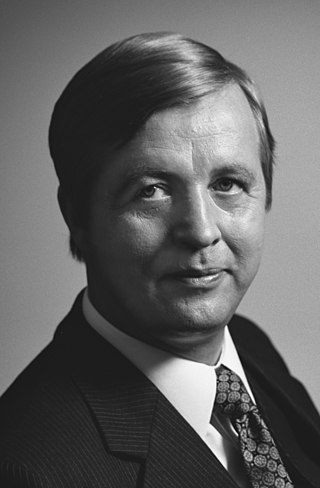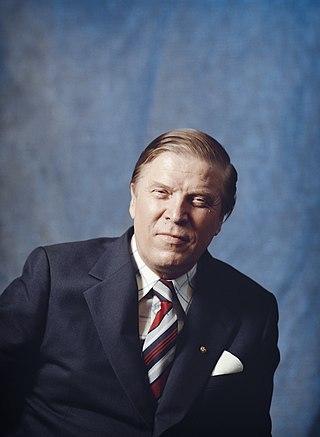The time of independence (1917–present)
The Finnish Senate issued a declaration of independence on December 6, 1917, after Russia's second revolution in October 1917. The Council of People's Commissars of Soviet Russia, chaired by Lenin, recognized Finland's independence on December 31, 1917, and soon after that many other states followed. On January 28, 1918, a civil war broke out that ended in the victory of German-backed Whites against Bolsheviks-backed Reds. In the same year, the volunteers made some armed expeditions into Soviet Russia, including Karelia, and also Estonia. Peace with Soviet Russia was established in Tartu on November 14, 1920. During World War II, Finland fought against the Soviet Union in the Winter War of 1939–1940 and in the Continuation War of 1941–1944. After the ceasefire on September 4, 1944, the weapons had to be turned at the request of the Soviet Union against Germany in the Lapland War of 1944–1945. [7]
Independence, civil war and the inter-war period
The second Russian revolution allowed Finland to break away from the Russian empire, and independence was declared on 6 December 1917. Within weeks, domestic political differences led to a Finnish Civil War that lasted until May 1918, when right-wing forces, with some German assistance, were able to claim victory. As a consequence, Finland began its existence as an independent state with a considerable segment of its people estranged from the holders of power, a circumstance that caused much strife in Finnish politics. [8]
After right-wing dreams of a monarchy based on the coronation of a German prince as the king of Finland came crumbling down with the German defeat in the World War, a republic was formed. In mid-1919, Finns agreed on a new Constitution, one that constructed a modern parliamentary system of government from existing political institutions and traditions. The 200-seat unicameral parliament, the Eduskunta, was retained. A cabinet, the Council of State, was fashioned from the Senate of the tsarist period. A powerful presidency, derived, in part at least, from the office of governor general, was created and provided with a mixture of powers and duties that, in other countries, might be shared by such figures as king, president, and prime minister. Also included in the new governmental system was an independent judiciary. The powers of the three branches of government were controlled through an overlapping of powers, rather than a strict separation of powers. [8]
Finland faced numerous political and economic difficulties in the interwar years, but it surmounted them better than many other European countries. Despite the instability of many short-lived governments, the political system held together during the first decades of independence. While other countries succumbed to right-wing forces, Finland had only a brush with fascism. Communist organizations were banned, and their representatives in the Eduskunta arrested, but the SDP was able to recover from wounds sustained during the Civil War and was returned to power. In 1937 the party formed the first of the so-called Red-Earth coalitions with the Agrarian League, the most common party combination of the next fifty years, one that brought together the parties representing the two largest social groups. The language problem was largely resolved by provisions in the Constitution that protected the rights of the Swedish-speaking minority. [8]
World War II and the Cold War period
Finland's official foreign policy of neutrality in the interwar period could not offset the strategic importance of the country's territory to Nazi Germany and to the Soviet Union. The latter was convinced that it had a defensive need to ensure that Finland would not be used as an avenue for attack on its northwestern areas, especially on Leningrad. Moreover, Nazi Germany and the Soviet Union had agreed in the Molotov–Ribbentrop Pact to divide the countries of Eastern Europe between themselves. Accordingly, the Soviet Union launched an attack of Finland in November 1939. A valiant Finnish defense slowed the invaders, but in March 1940 the Winter War ended when Finland agreed to cede to the Soviets about 10 percent of Finnish territory and to permit a Soviet military base on Finnish soil. In June 1941 Finland joined Germany as cobelligerent in its attack on the Soviet Union. In what Finns call the Continuation War, Finland confined its military actions to areas near its prewar borders. In the fall of 1944, Finland made a separate peace with the Soviet Union, one that was conditional on its ceding territory, granting basing rights, agreeing to onerous reparation payments, and expelling German forces from its territory. Nevertheless, Finland succeeded in being one of only two belligerents in Europe that stayed never occupied, independent and with its democracy intact throughout the war, the other being the United Kingdom. [9]
By the early 1950s, the patterns of postwar Finnish politics were established. No one group was dominant, but the Agrarian League held the presidency under Urho Kekkonen for a quarter century. Kekkonen first became president in 1956, and secured a place for the conservative Agrarian League as almost a permanent governing party until the late 1980s. In 1966 it changed its name to the Center Party (Keskustapuolue or Keskusta) in an attempt to appeal to a broader segment of the electorate, but it still was not successful in penetrating southern coastal Finland. Meanwhile, the Social Democratic Party historically the largest party, still remained strong but it was often riven by dissension. In addition, it had to share the leftist vote with the Communist Party of Finland (Suomen Kommunistinen Puolue or SKP). As a consequence, right-wing parties never had to face a united left. In the 1980s, the communists had severe problems adjusting to new social conditions, and they split into several warring groups. As a result, their movement had a marginal position in Finnish politics. The SFP, a moderate centrist party with liberal and conservative wings, had a slightly declining number of seats in the parliament Eduskunta, but its position in the middle of the political spectrum often made it indispensable for coalition governments. The National Coalition Party (Kansallinen Kokoomuspuolue or Kokoomus), rigidly conservative in the interwar period, gradually became more moderate and grew stronger, surpassing the Center Party in the number of parliamentary seats in 1979. Excluded from a role in government for decades, possibly because it had been more right-wing earlier, the Kokoomus participated in the government formed after the national elections of 1987, supplying the prime minister, Harri Holkeri. The Liberal Party of the postwar period was never strong, and it had a negligible role by the 1980s and eventually was dissolved. [9]

A number of smaller parties, protest parties, and parties representing quite distinct groups filled out the list of about a dozen organizations that regularly vied for public office. Pensioners and activist Christians each had their own party, and environmentalists won several seats in the 1983 and the 1987 national elections — a movement which later grew to the modern Green Party during the 1990s. The most active of the protest parties was the Finnish Rural Party (Suomen Maaseudun Puolue or SMP), which managed to take votes from both the Center Party and leftist parties. It scored its first big successes in the 1970 national elections. Since then its electoral results have varied considerably. By the late 1980s, it seemed a spent force, but arose again as a populist right-wing party after changing its name to Perussuomalaiset or True Finns. [9]
After the 1966 national elections President Kekkonen succeeded in forming a popular front coalition government that contained communists, socialists, and members of the Center Party. Although this government lasted only two years and was succeeded for another decade by short-lived coalition and caretaker civil service governments, it was the beginning of what Finns call the politics of consensus. By the 1980s, consensus politics had become so dominant that some observers claimed that Finnish politics, long so bitter and contentious, had become the most boring in Western Europe. Although the larger parties differed on specific issues, and personal rivalries could be poisonous, there was broad agreement about domestic and foreign policy. The cabinet put in place after the 1983 elections, consisting mainly of social democrats and members of the Center Party, completed its whole term of office, the first government to do so in the postwar period. This ushered in an era of relatively long lasting governments where leadership changes took place mainly through regular elections. [9]
A foundation of the politics of consensus was the success of the system of broad incomes agreements that has characterized Finland's employee-employer relations in recent decades. The first of these, the Liinamaa Agreement, dated from 1968. By the 1980s, the process was so regular as to seem institutionalized. With about 80 percent of the work force as members, unions negotiated incomes agreements with employers' organizations. The government often helped in the talks and subsequently proposed legislation embodying social welfare measures or financial measures that underpinned the agreements. The process was successful at increasing labor peace in a country that had been racked by strikes for the first decades after World War II. Although there were complaints that the agreements bypassed political channels or excluded minority opinion, the obvious prosperity they had helped bring about made the incomes policy system and the politics of consensus highly popular. [9]
Integration to the West
In 1982, Mauno Koivisto, the successor of long-term president Urho Kekkonen, was elected president, promising to reduce the powers of the president and increase those of the prime minister. [10]
The convergence of Finland and the European Community began in the autumn of 1989 with the decision to join the European Economic Area (EEA) in 1994. [11]
Following a positive vote in Parliament, Finland's application for EC membership was submitted on 18 March 1992, and membership negotiations began on 1 February 1993 at the same time as with Sweden and Austria. [12]
Finland joined the European Union in 1995. In 2002, the euro replaced the markka as Finland's official currency. [13]
After almost 30 years of close partnership with NATO, Finland joined the Alliance on 4 April 2023. Finland's partnership with NATO was historically based on its policy of military non-alignment, which changed following Russia's full-scale invasion of Ukraine in February 2022. [14] On 1 March 2024, Alexander Stubb, a staunch supporter of NATO, was sworn in as Finland’s new president. [15]













